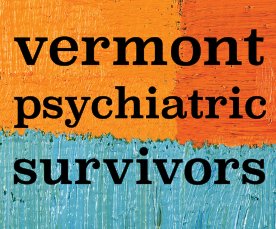The good intention to help others sometimes flies smack-dab into causing harm instead.
How does one balance the good intent of creating a safe physical space for people in crisis against the damage of a space so sanitized and dehumanizing that those same people are at greater risk of self-harm once they are discharged from the hospital?
How does one balance the desire to send help to interrupt an intended suicide against the betrayal from a breach of confidentiality and the potential lives lost if people in crisis do not feel safe to call a hot line?
How does one balance the desire to help someone escape the pain of a psychotic episode against the loss of all trust in a system that uses forced medication?
These are all real questions, both old and new. The sad thing is that the policy decisions that prioritize immediate help are based neither on research nor on patient-driven principles. There is rarely input from the people who are subjected to these “safety measures” but may be damaged by the effects.
The debate over forced treatment is a longstanding one. There is no research, however, on the long-term impacts on people who might be temporarily stabilized and able to leave the hospital, but then never reach long term recovery because they reject future voluntary help from a system that violated them. Advocates have begged for this kind of research, to no avail.
Over the past several decades, oversight agencies have demanded “ligature-proof” hospital units to prevent inpatient suicides, even though they have always been rare events.
Patients have lost access to simple opportunities to rebuild skills for a return to the community. Once there were group cooking sessions, the simple availability of self-care by making tea or using the laundry, opportunities to exercise or get fresh outside air. Now, some hospitals even lock bathrooms, forcing patients into the inherently demeaning position of having to ask staff to allow them to use it.
These types of disempowerment clearly interfere with a recovery-oriented environment, and research has long established that the time of greatest risk of suicide is not in the hospital, but in the time frame immediately after leaving. A person goes from a totally protected environment to a totally unsupported one.
To what degree are deaths from self-harm after discharge on the increase, as those protected environments become more and more sanitized of any normal environmental risks?
We don’t know, because it is not being researched.
Now, just in the past year, we have seen the elimination of any remaining confidential suicide prevention hot lines. They say they are confidential, because the conversations are private.
But if you admit during that “confidential” phone call that you have a serious intention and plan for suicide our modern word of GPS and phone tracking means that even if you refuse consent, “help” will be sent to your location. And that help may be in the form of a police response.
No one wants someone to die for lack of help – to be on the phone and have the call be cut off by a lethal act of self-harm. “Allowing” that to happen may been inconceivable.
But how many people use a hot line precisely because they believe it is a confidential way to reach out, only to discover that it is not? How many people may die instead because they are now afraid to even make that call? Because they want someone to support them, but don’t want their confidentiality breached or the police to be called in?
We don’t know. There is no research.
And there may be conversation among the “helpers” about how to balance among priorities, but the voices of those affected by the decisions are, once again, being left out.

